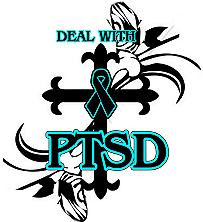How Is PTSD Detected?
A doctor who has experience helping people with mental illnesses, such as a psychiatrist or psychologist, can diagnose PTSD. The diagnosis is made after the doctor talks with the person who has symptoms of PTSD.
To be diagnosed with PTSD, a person must have all of the following for at least 1 month:
- At least one re-experiencing symptom
- At least three avoidance symptoms
- At least two hyper-arousal symptoms
- Symptoms interfere with daily life, such as going to school or work, being with friends, taking care of important tasks.
Are There Effective Ways To Treat PTSD?
A number of treatment techniques, sometimes combined with one another, are being used with varying degrees of success:
- Cognitive behavioral therapy, to help people recognize their ways of thinking, or “cognitive patterns,” that keep them stuck
- Exposure therapy, to help people safely face what they fear, in order to learn to cope with it (virtual reality devices are often used to simulate a situation or setting in which the trauma took place)
- Eye movement desensitization and reprocessing, or EMDR, which combines exposure therapy with a series of guided eye movements that help people process traumatic memories and change the way they respond to those memories.
- Anti-anxiety medications and antidepressants can also ease the symptoms of PTSD; some people with PTSD whose symptoms include insomnia or recurrent nightmares find relief with a medication
called prazosin that blocks the effect of adrenaline in the body.
- Osanetant, a medication that has been tested in humans to treat schizophrenia, and was found to be safe but ineffective, has recently been found to block fear memories in mice shortly after exposure to a trauma; it targets a distinct group of cells in the brain that controls the formation and consolidation of fear memories. According to Foundation Scientific Council member Kerry Ressler, M.D., Ph.D., who led the research at Emory University, osanetant shows potential to aid in preventing PTSD from developing if administered in the emergency room or battlefield, for example, before traumatic memories consolidate.


